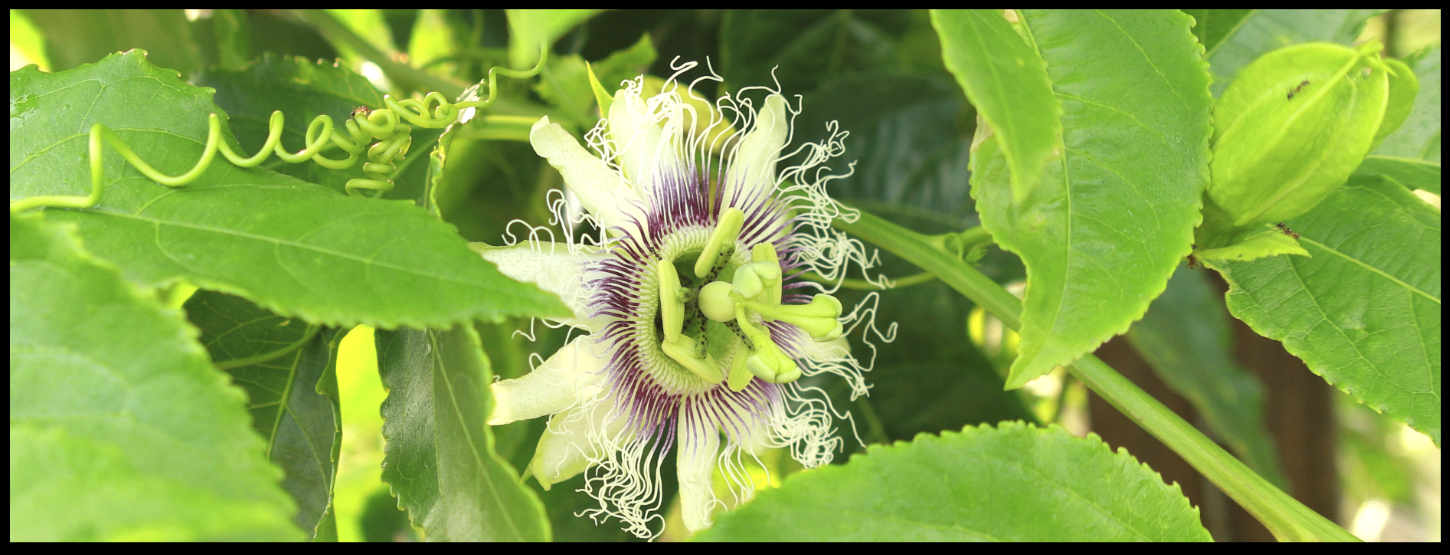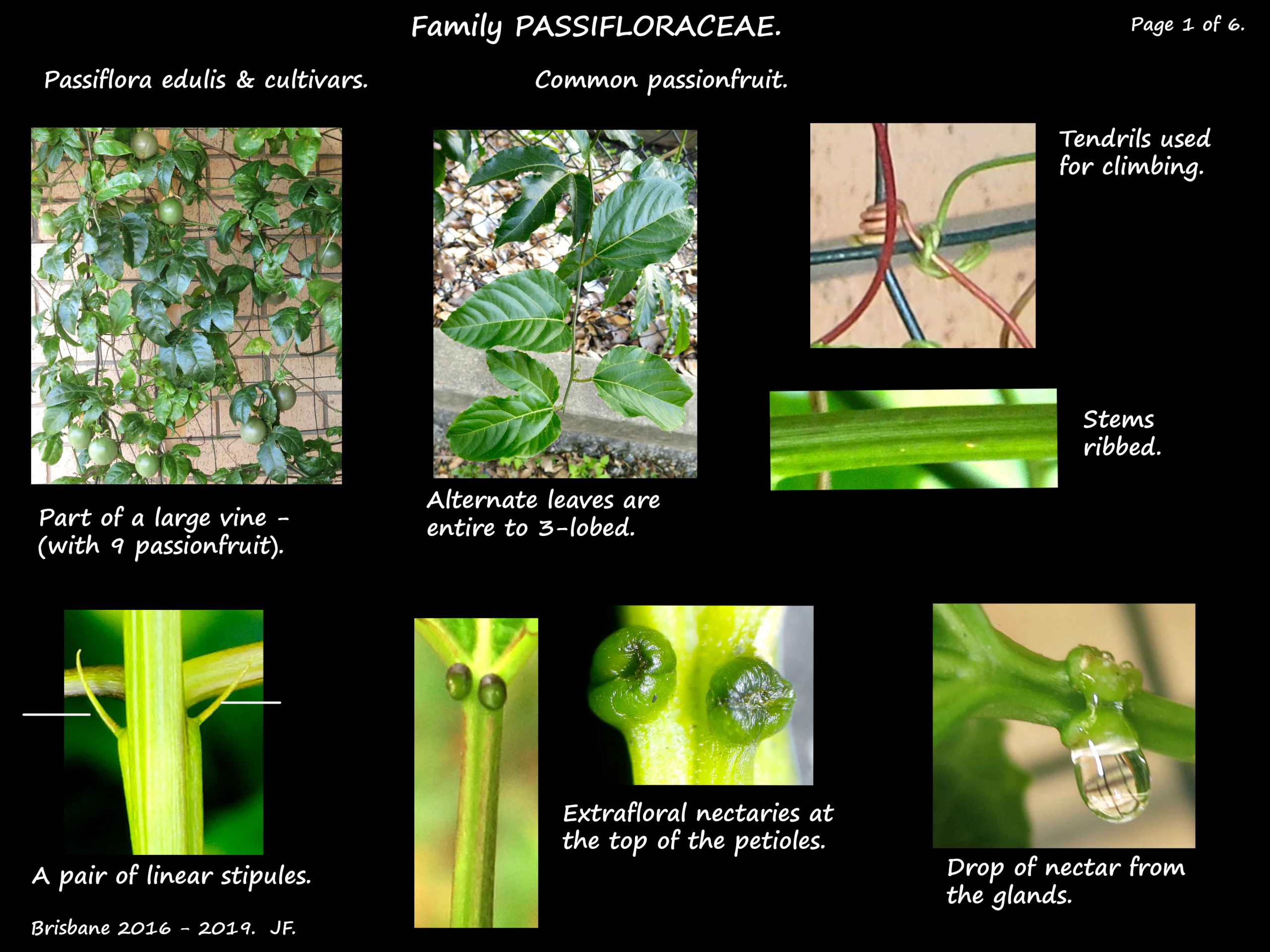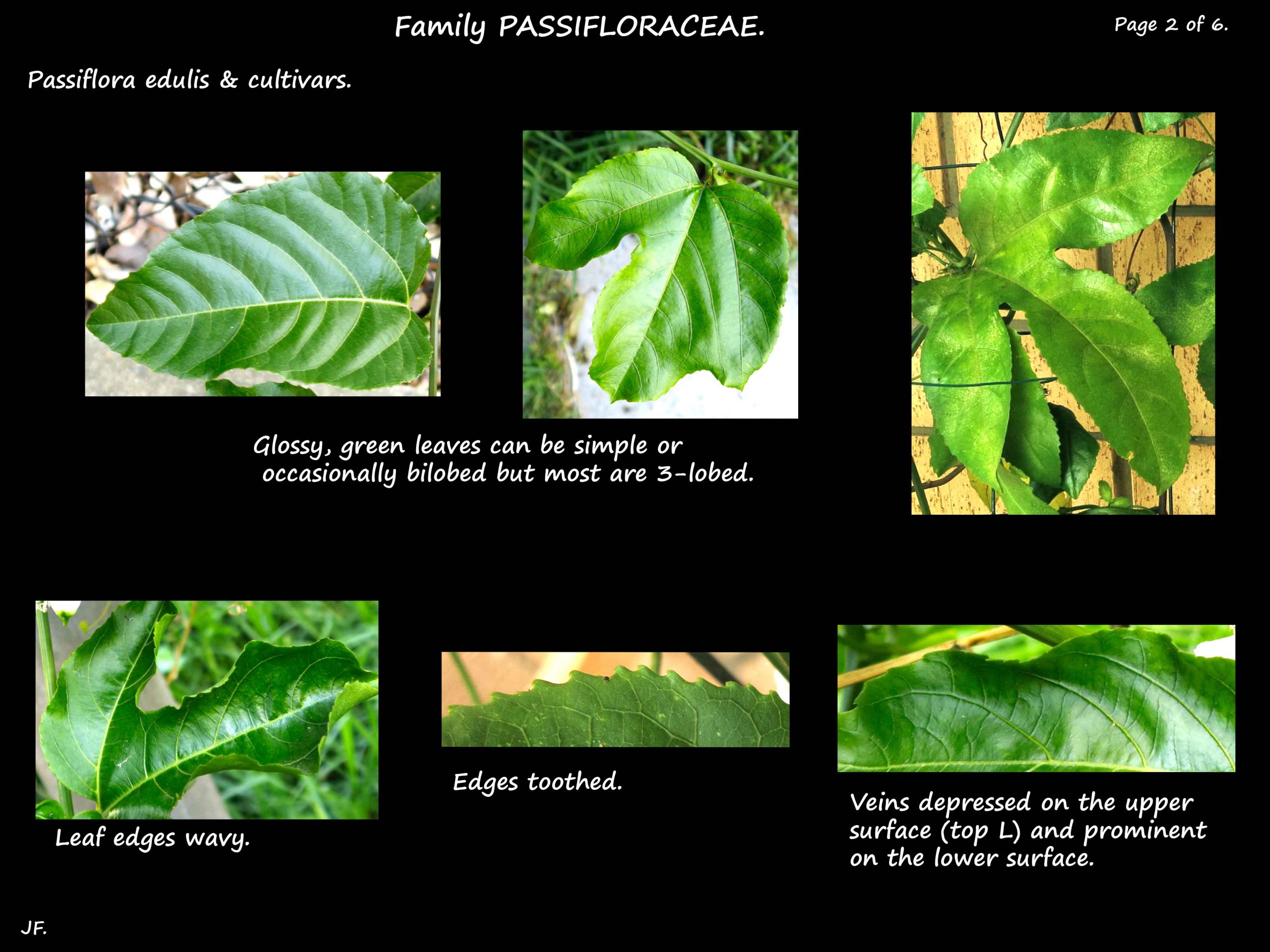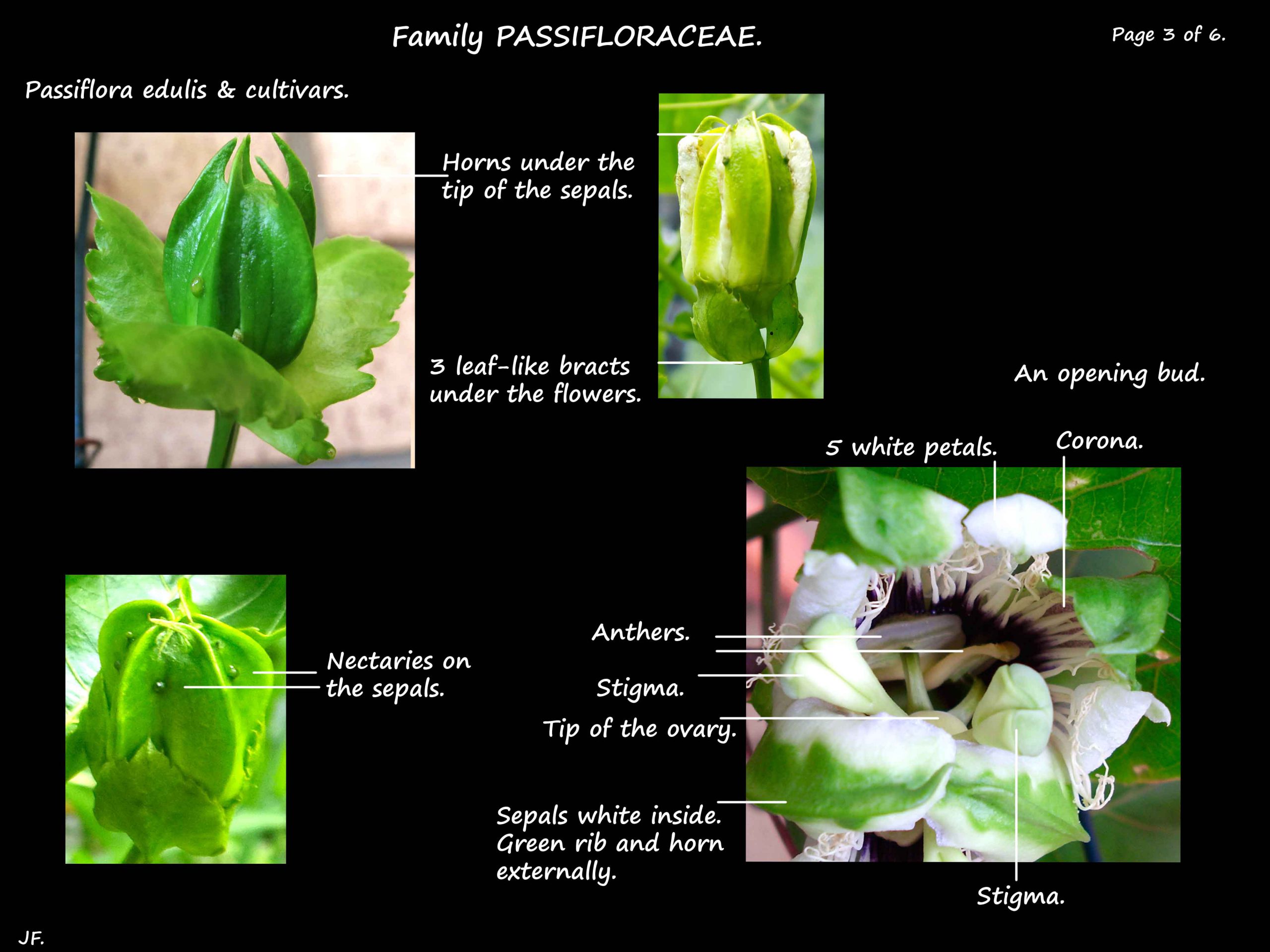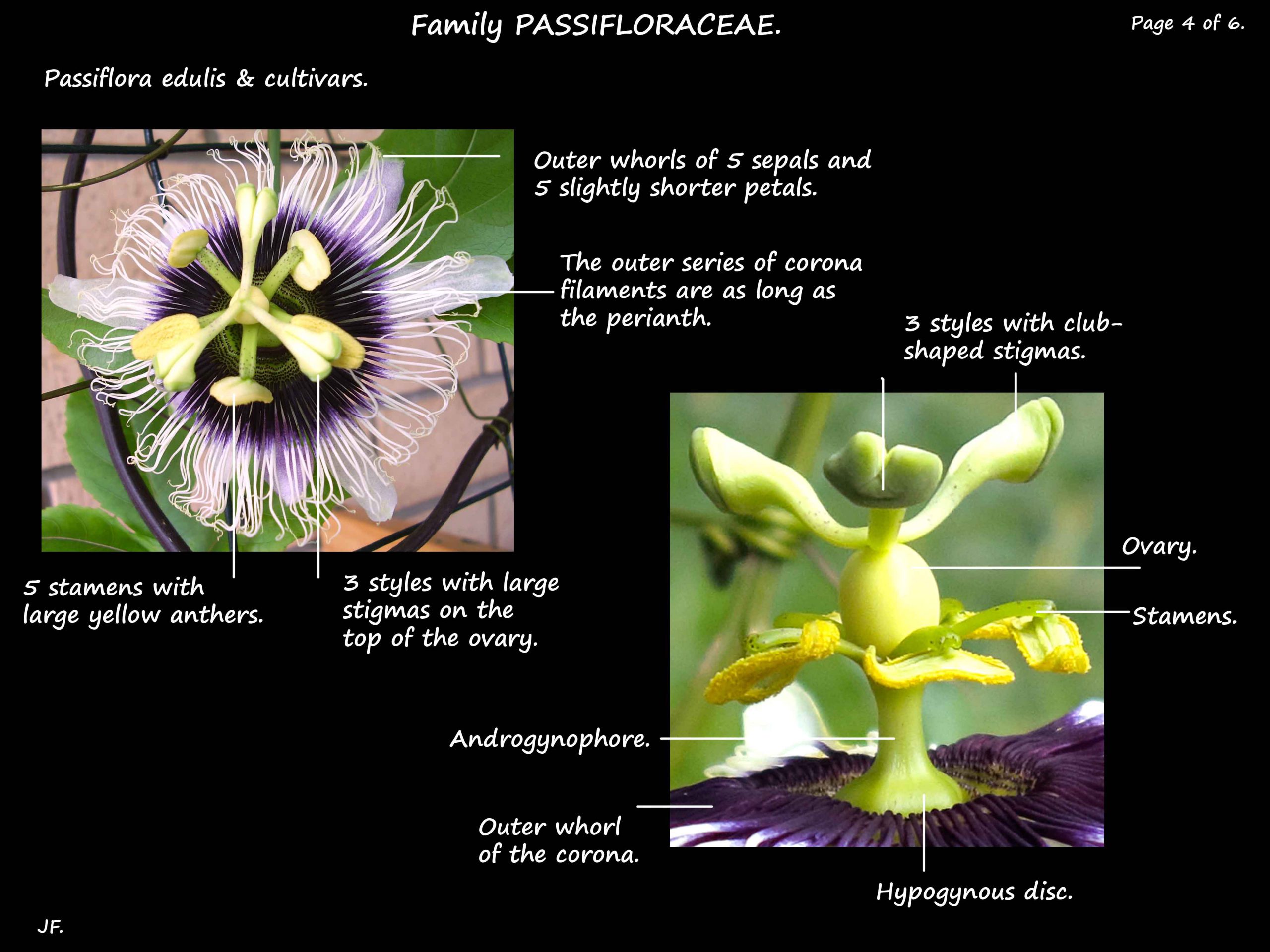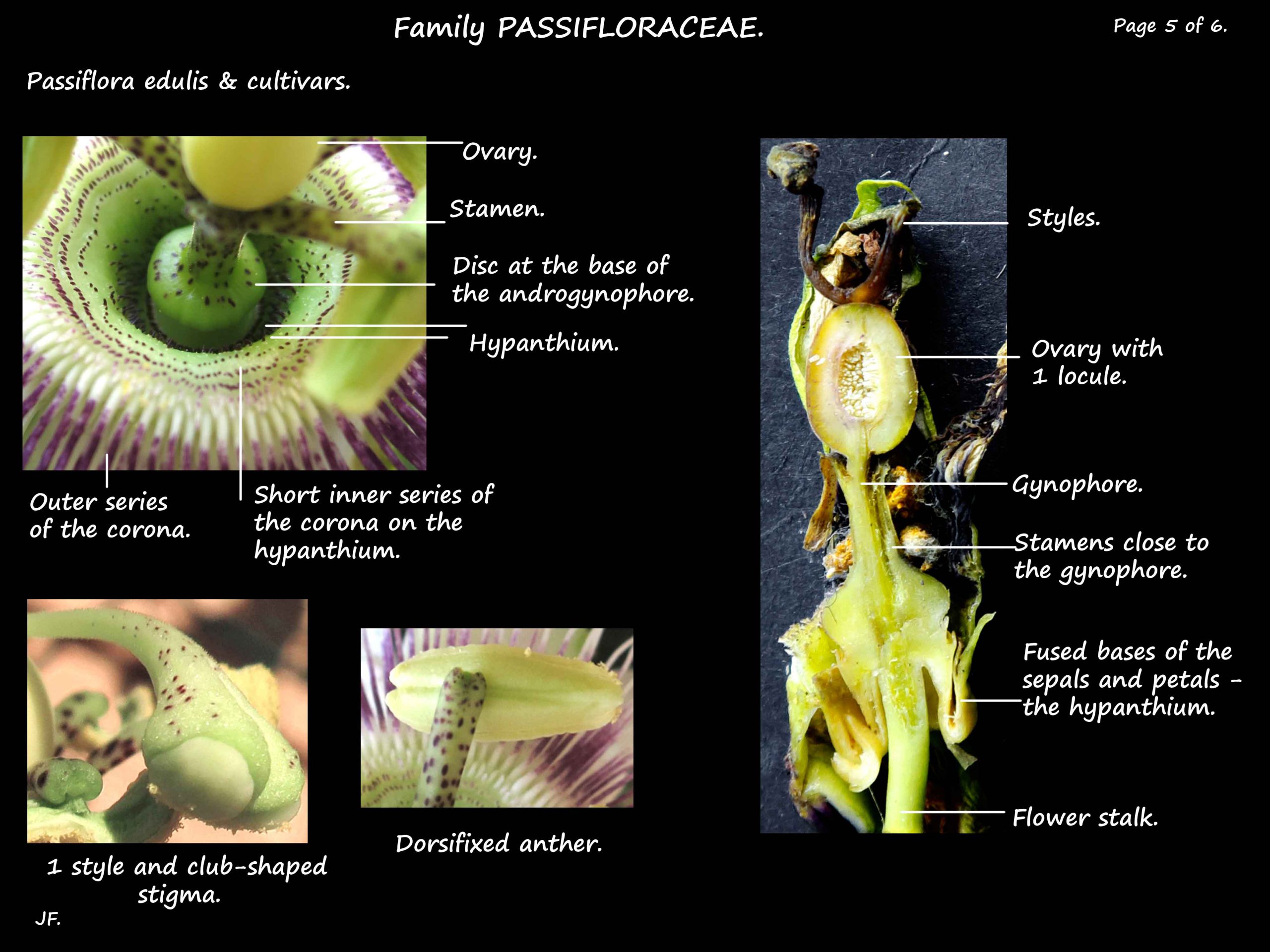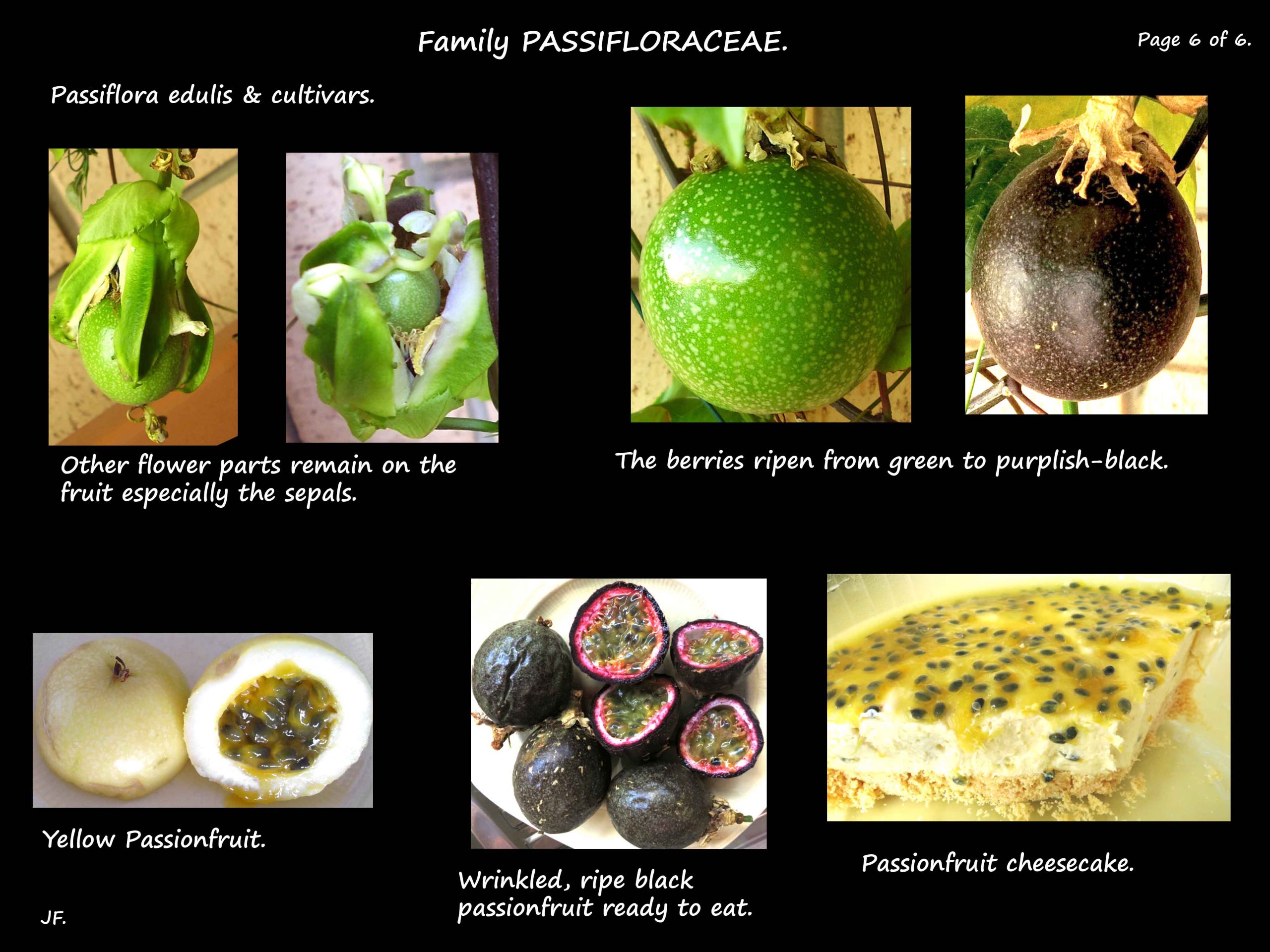Passiflora edulis – Common passionfruit.
Family Passifloraceae.
Known as the common, black, purple or yellow passionfruit.
It is widely naturalised in Queensland where it is a weed.
It is a vine with angular stems to 2 m long climbing with long axillary tendrils.
Glossy, green leaves up to 10 cm long are alternately arranged.
Occasionally entire or 2-lobed they are mostly 3 lobed.
The lobes are variously shaped from linear to oblong.
The tips can be rounded or pointed and the base heart-shaped or rounded.
The margins are toothed and may be wavy.
There are small stipules on the petioles.
Axillary inflorescences, on 1 cm stalks, are up to 6 or 8 cm across.
There are three bracts.
The 5 sepals are white with some green underneath.
They alternate with 5 oblong white petals that have a faint purple tinge.
The outer series of corona filaments are as long as the petals.
They are white with purple bases or bands.
Inside this are series of very short filaments.
The androgynophore has the ovary at the top.
The 3 styles are pale with purple spots and large, club-shaped stigmas.
Below the ovary are the 5 stamens with greenish filaments and large yellow anthers.
The fruit are ovoid to almost round and up to 4 cm across.
They have a tough skin with a thick layer of pith.
Orange pulp is attached to the 3 mm black seeds.
Fruit most commonly seen are the black to purplish ones with wrinkled skin.
Passiflora edulis var. flavicarpa has yellow fruit.
There are numerous cultivars and many are grafted on resistant root stock.
J.F.
